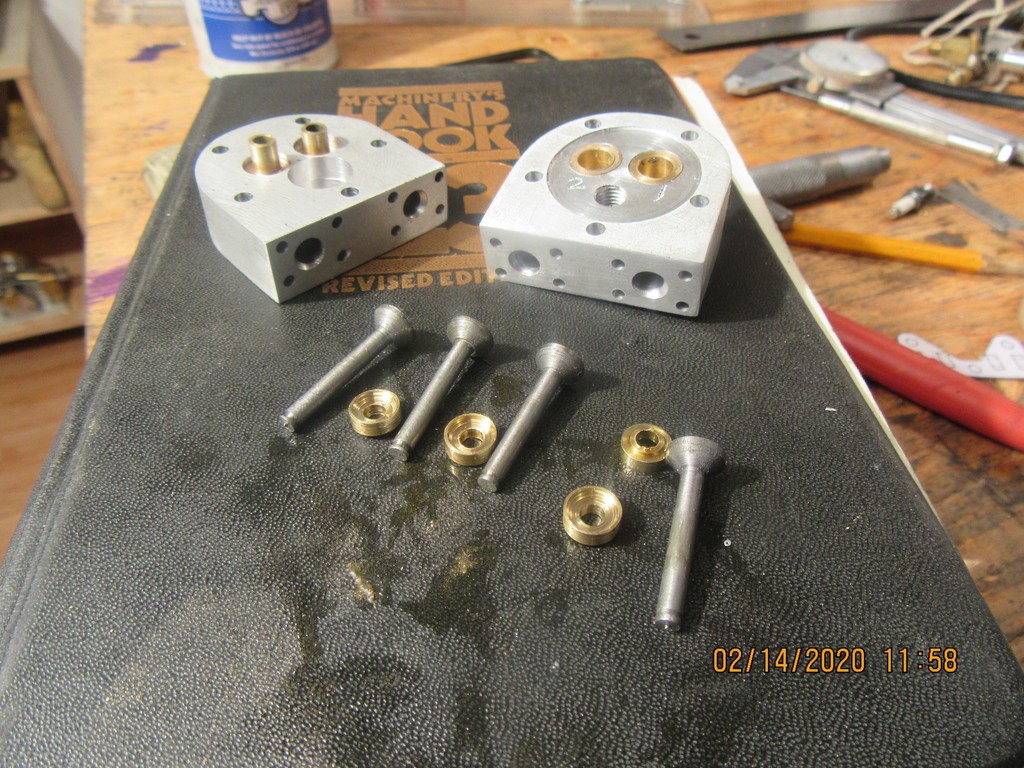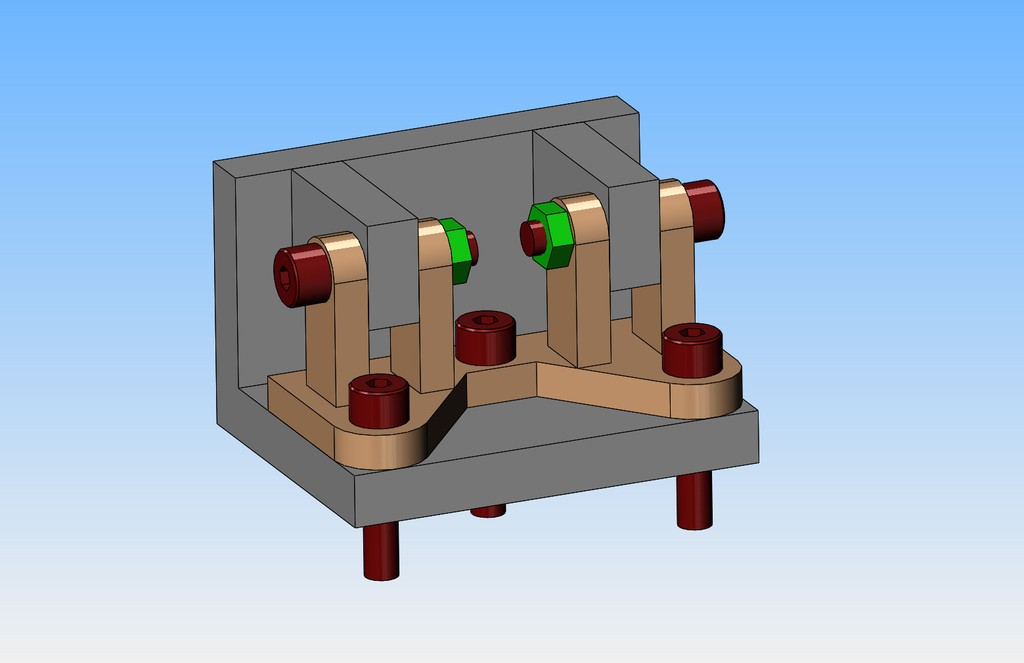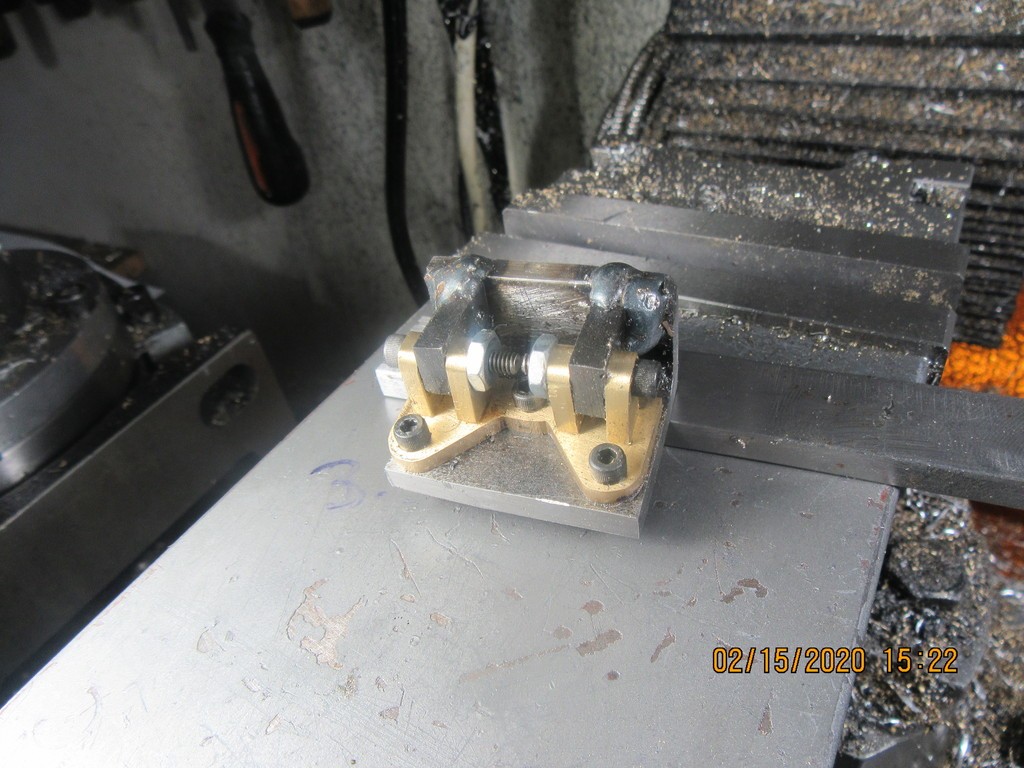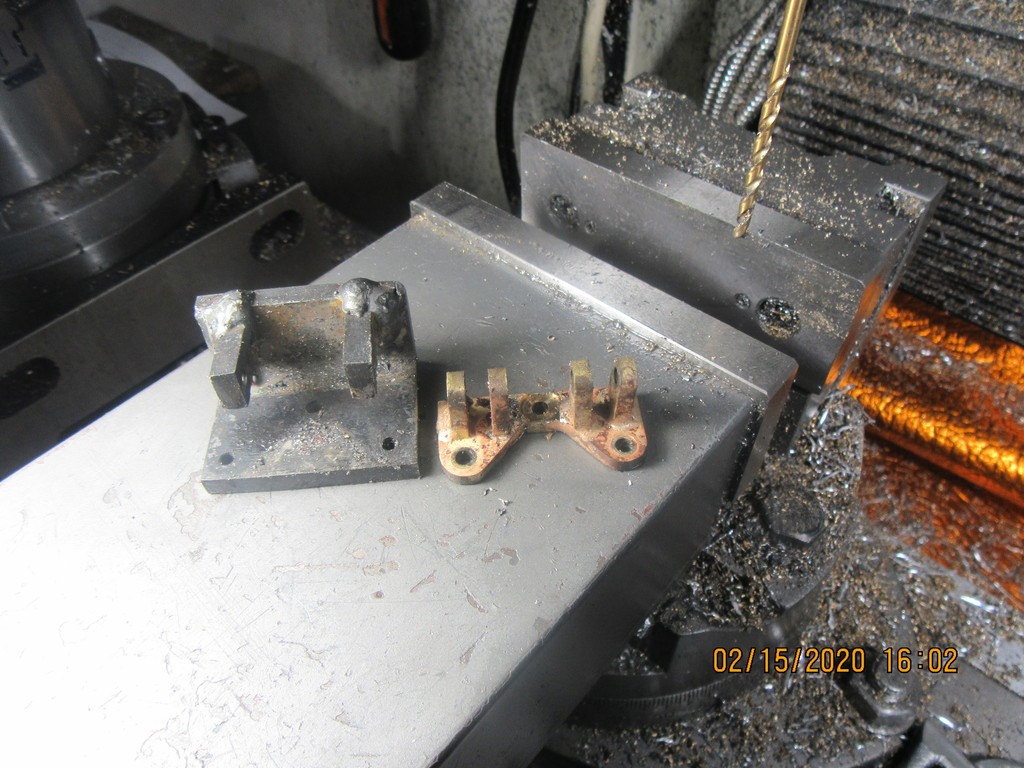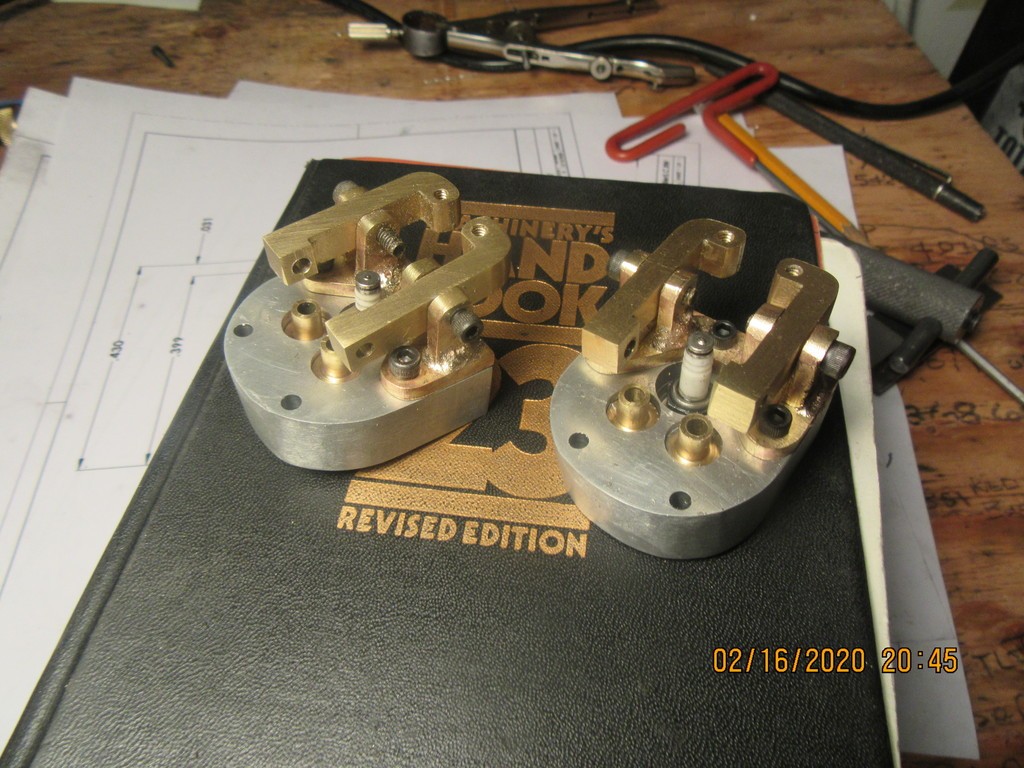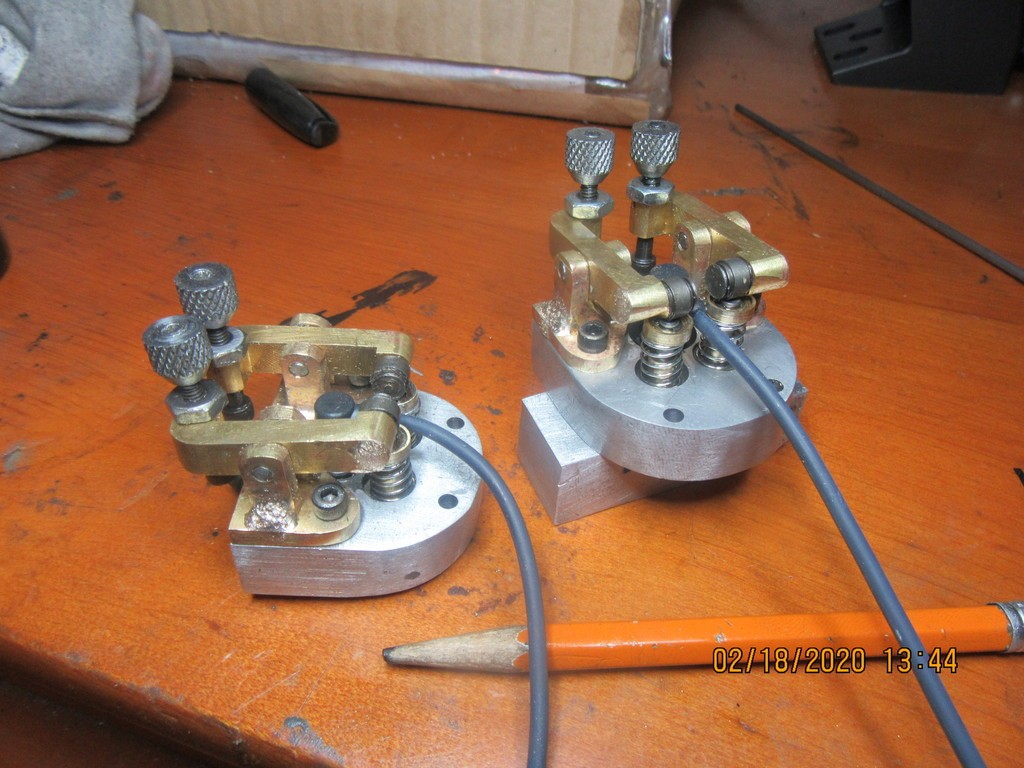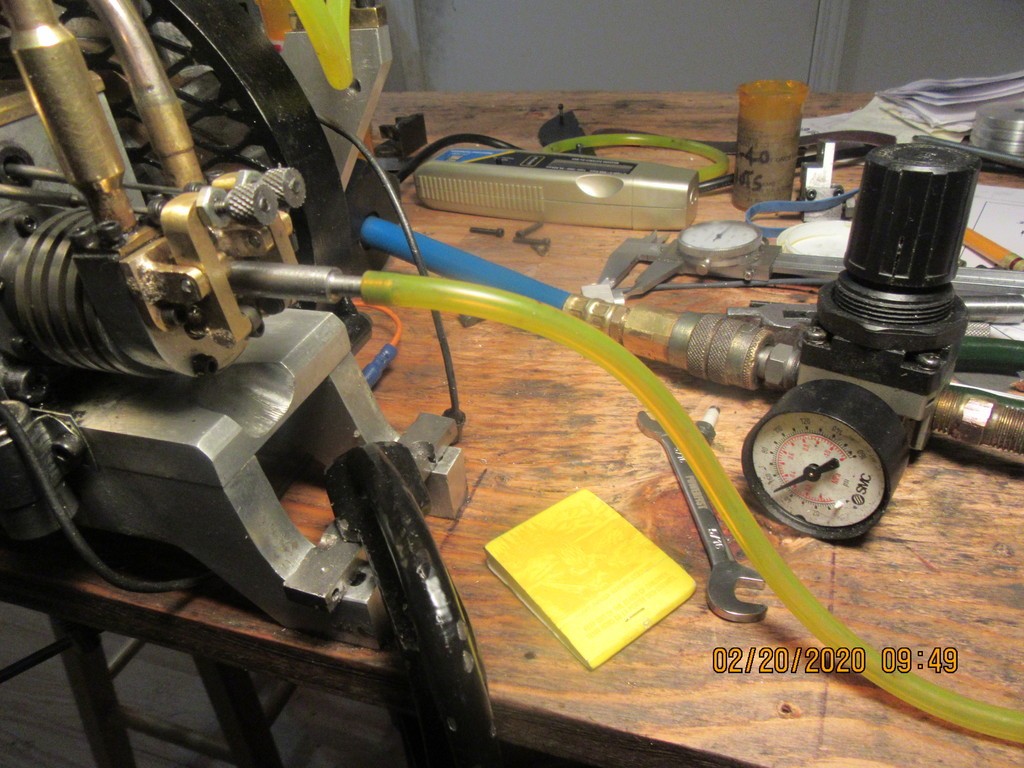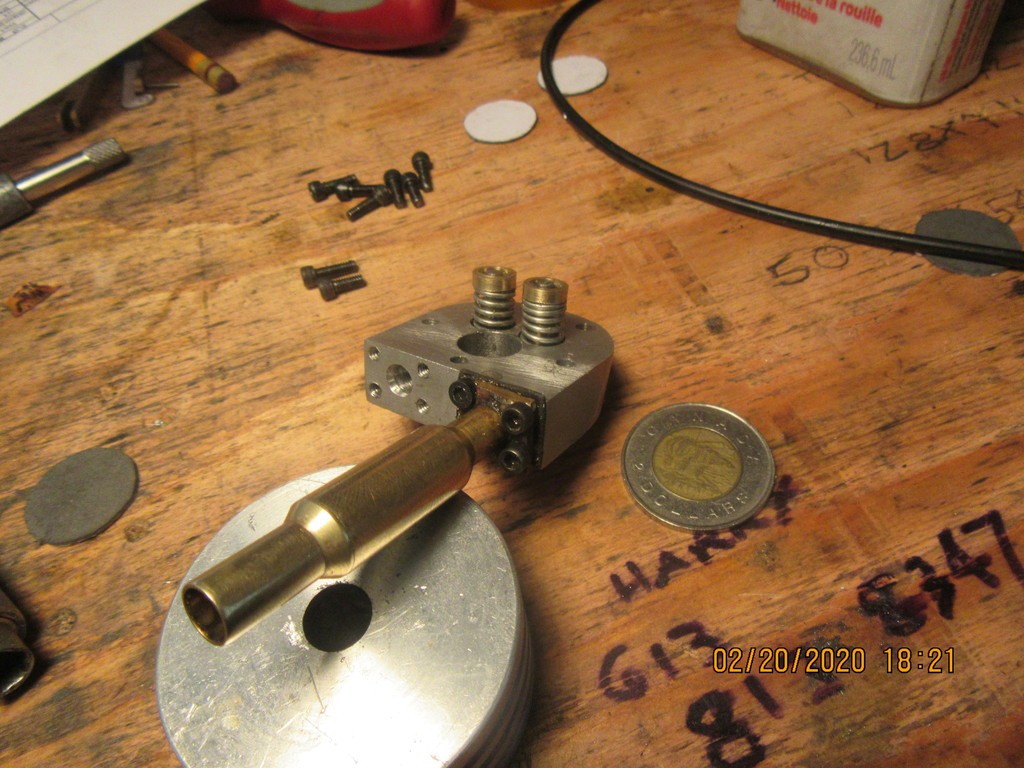All of the moving components could probably have been made of aluminum. Aluminum weighs almost exactly 1/3 of what brass weighs. I was limited to brass for the bracket, because I don't have the equipment to weld or solder aluminum. Would the difference in the way the engine runs have been measurable?---Probably not, at the speed I am asking it for. The original heads were aluminum, the original rockers were steel, and the original knurled adjusters were brass. The new heads are aluminum, the new rockers are brass, and the new knurled adjusters are mild steel. The engine in it's original form ran very well, but there was always a problem on cold starts--oil would separate from the fuel and foul the sparkplugs, because they were right at the very bottom of the cylinder. I'm not reinventing the wheel with these new heads, All I'm doing is correcting what I determined was a design flaw. I haven't dismantled anything from the old heads, the design flaw only appeared when the cylinders were horizontal. The old heads may get re-used on a new engine with multiple vertical cylinders.
